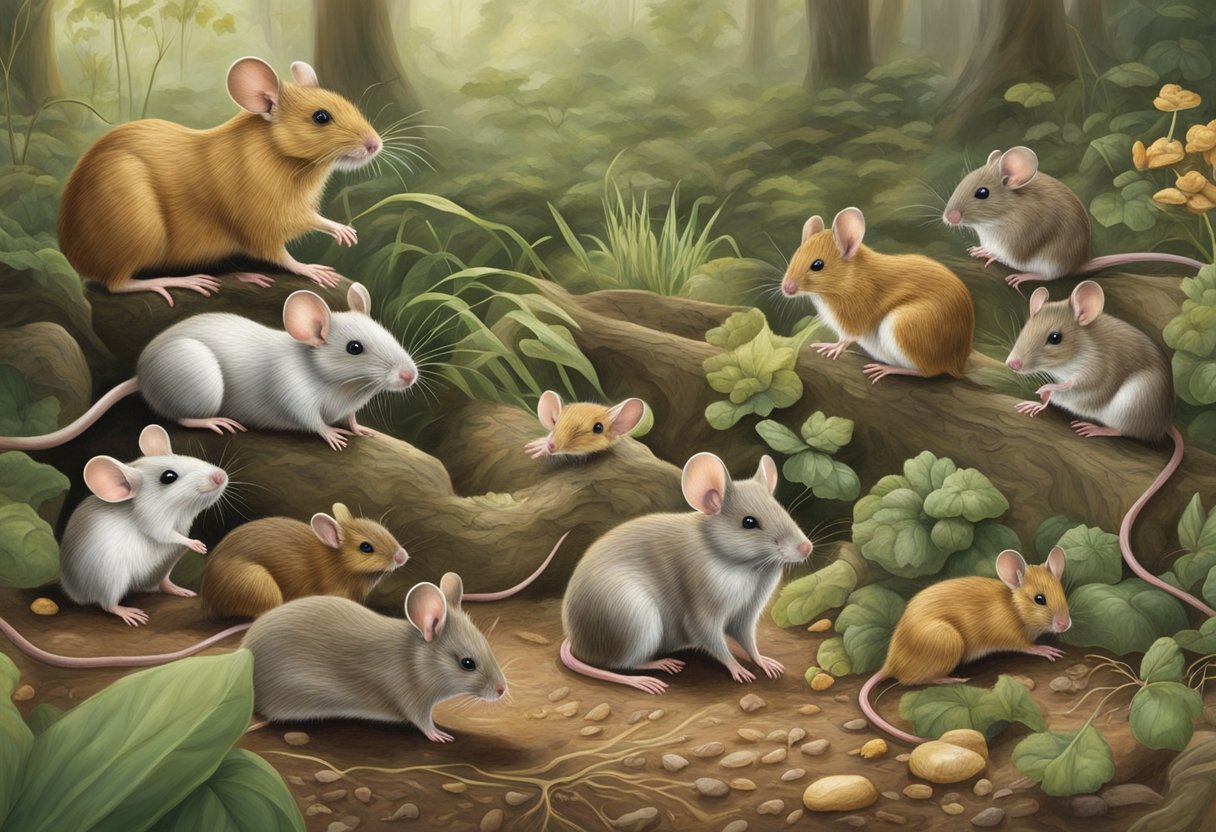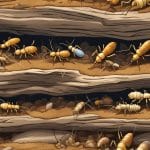Types Of Mice
Types of mice are small, omnivorous rodents that belong to the family Muridae. They are found all over the world, except for Antarctica, and are known for their adaptability, intelligence, and ability to reproduce quickly. Mice are important members of many ecosystems, serving as prey for larger animals and helping to control insect populations.
There are many different types of mice, each with their own unique physical characteristics, behavior, and habitat. Some of the most common types of mice include the house mouse, deer mouse, and field mouse. House mice are small, gray or brown rodents that are often found in homes and other buildings, while deer mice are larger and have distinctive white fur on their underbelly. Field mice are found in fields, meadows, and other grassy areas, and are known for their long tails and large ears.
Key Takeaways
- Mice are small, omnivorous rodents that are found all over the world, except for Antarctica.
- There are many different types of mice, each with their own unique physical characteristics, behavior, and habitat.
- Some of the most common types of mice include the house mouse, deer mouse, and field mouse.
Classification and Species

Common Mice Species
Mice are small rodents that belong to the family Muridae and subfamily Murinae. There are over 1,100 species of mice, but some of the most common species include the Deer mouse, Field mouse, and House mouse. The House mouse (Mus musculus) is the most well-known species of mouse and is widely distributed throughout the world.
The Deer mouse (Peromyscus maniculatus) is a common species found in North America. It is known for its distinctive white underbelly and large eyes. The Field mouse (Apodemus sylvaticus) is a species found in Europe and Asia. It is known for its brown fur and long tail.
Scientific Taxonomy
Mice belong to the order Rodentia and the suborder Myomorpha. They are part of the superfamily Muroidea, which includes mice, rats, voles, hamsters, gerbils, and many other relatives. The family Muridae is the largest family of rodents and includes over 700 species.
The family Cricetidae is another family of rodents that includes many species of mice. The genus Mus is a specific genus of muroid rodents that includes the typical mice. The genus Mus is further divided into several subgenera, including Pyromys, Coelomys, Nannomys, and Mus.
In summary, mice are a diverse group of rodents that belong to the family Muridae and subfamily Murinae. The most common species of mice include the Deer mouse, Field mouse, and House mouse. Mice belong to the order Rodentia and the suborder Myomorpha and are part of the superfamily Muroidea. The family Muridae is the largest family of rodents and includes over 700 species, while the family Cricetidae is another family of rodents that includes many species of mice. The genus Mus is a specific genus of muroid rodents that includes the typical mice.
Physical Characteristics
Size and Appearance
Mice are small rodents with a pointed snout and a long, often hairless, tail. They come in a variety of sizes and colors, depending on the species. The smallest mouse species is the Harvest Mouse, which is only about 2.5-3.5 inches long, while the largest is the Wood Mouse, which can grow up to 10 inches long.
The fur of mice is usually soft and dense, and comes in a range of colors, including brown, gray, and white. Some species, such as the Deer Mouse, have distinctive markings, such as a white belly and dark fur on their back.
Distinctive Features
Mice have several distinctive features that set them apart from other rodents. For example, they have large ears and eyes, which help them detect predators and find food. They also have narrow hind feet with bald soles, and sharp, small claws, which enable them to climb and run quickly.
Some species of mice, such as the Jumping Mouse, have long hind legs that allow them to jump up to 9 feet in a single leap. Others, such as the Wood Mouse, have a thick, bushy tail that helps them maintain balance while climbing.
In summary, mice are small rodents with a pointed snout, long tail, and soft, dense fur. They come in a variety of sizes and colors, and have several distinctive features, such as large ears and eyes, narrow hind feet, and sharp claws.
Behavior and Habitat
Mice are small, nimble rodents that are known for their ability to adapt to various environments. They are found in almost all parts of the world, from urban areas to rural fields. Mice are nocturnal animals, which means they are active mainly during the night. They spend most of their day in their nests, which they build in burrows or other hidden places.
Nesting and Burrows
Mice are known for their ability to build nests quickly and efficiently. They use various materials such as grass, leaves, and twigs to create a comfortable and safe living space. Mice build their nests in burrows, which they dig in the soil or other soft materials. They also use existing structures such as abandoned animal burrows, hollow logs, and buildings.
Feeding Patterns
Mice are omnivorous animals, which means they eat both plants and animals. They feed on a variety of foods such as seeds, fruits, insects, and small animals. Mice are known for their ability to survive on very little water, which allows them to live in arid environments. They store food in their nests to ensure a steady supply of food during times of scarcity.
Nocturnal Activities
Mice are nocturnal animals, which means they are most active during the night. They use their keen senses of smell, hearing, and touch to navigate in the dark. They are also good climbers and can climb walls and other vertical surfaces to escape predators or reach food sources. Mice are social animals and live in groups called colonies. They communicate with each other using a variety of vocalizations, such as chirps, squeaks, and ultrasonic sounds.
In urban areas, house mice are the most common type of mice. They are known for their ability to adapt to living in human-made structures such as buildings and homes. Field mice and deer mice are more commonly found in rural areas, where they live in fields and forests. Voles are another type of mouse that is found in grassy areas and meadows.
Mice are also known for leaving droppings and urine in their nests and feeding areas. It is important to keep these areas clean to prevent the spread of diseases and pests. Overall, mice are fascinating animals that have adapted to various environments and have a unique place in the ecosystem.
Mice and Human Interaction
Mice are commonly found in human habitats, and their interaction with humans can have both positive and negative impacts. This section will explore the different ways in which mice and humans interact.
Pest Control
Mice are considered a pest due to their tendency to infest homes and other buildings. They can cause structural damage and create unsanitary conditions by leaving droppings and urine. In addition, they can carry diseases such as hantavirus, which can be transmitted to humans through contact with mouse feces or urine. Therefore, it is important to take measures to control mouse infestations in order to protect human health and property.
Diseases and Health Risks
As mentioned above, mice can transmit diseases to humans. In addition to hantavirus, they can also carry other diseases such as salmonella and leptospirosis. These diseases can be transmitted through contact with mouse droppings, urine, or saliva. Therefore, it is important to take precautions when cleaning up mouse infestations, such as wearing gloves and a mask.
Economic and Structural Impact
Mice can cause significant economic and structural damage to buildings. They can chew through wires, insulation, and other materials, leading to costly repairs. In addition, their presence can lead to decreased property values and loss of business for commercial properties. Therefore, it is important to take measures to prevent mouse infestations, such as sealing up entry points and using mouse repellent.
In conclusion, while mice and humans may interact in various ways, it is important to be aware of the potential risks associated with mouse infestations. Taking measures to control and prevent infestations can help protect human health and property.
Mice as Pets and Laboratory Animals
Pet Mice Care
Mice are commonly kept as pets due to their small size and low maintenance requirements. They are social animals and thrive in groups, so it is recommended to keep at least two mice together. It is important to provide a suitable habitat for pet mice, which includes a cage with adequate space, bedding material, food and water, and toys for enrichment.
Pet mice have specific dietary requirements and should be fed a balanced diet that includes a mix of seeds, grains, and vegetables. It is important to monitor their weight and adjust their diet accordingly to avoid obesity.
Breeding rate in pet mice is relatively high, and it is important to separate males and females to prevent unwanted litters. Baby mice, also known as pups, are born hairless and blind and require special care until they are weaned.
Research and Scientific Use
Mice are also extensively used in scientific research due to their genetic similarity to humans and their small size. They are used to study a wide range of diseases and conditions, including cancer, diabetes, and neurological disorders.
Different mouse species are used for different types of research, with the most commonly used species being Mus musculus. Scientists use various techniques to manipulate the genes of mice to study the effects of specific genes on disease and development.
In laboratory settings, mice are housed in specialized cages and provided with food and water. Careful attention is paid to their health and welfare to ensure accurate and ethical research practices.
Overall, mice serve as important models for both pet owners and scientists alike, providing valuable insights into the biology and behavior of these fascinating creatures.






